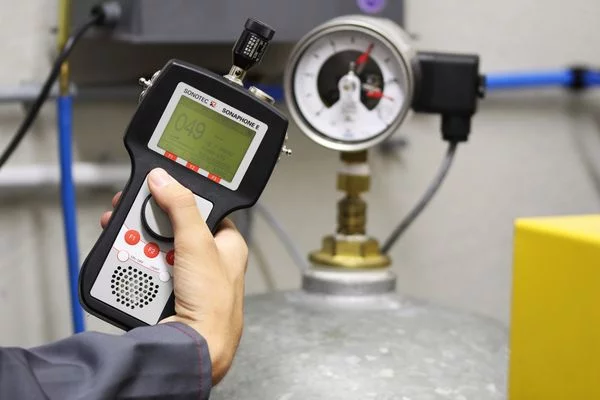Water conservation is a critical concern today, given the ever-increasing demand for this precious resource. Undetected water leaks pose a significant threat to our environment and infrastructure. Water usage, often taken for granted, can spiral out of control when leaks go unnoticed. The consequences of a leak can extend far beyond an increase in the water bill; they can damage property, disrupt daily life, and waste resources.
In this context, leak detection technology is crucial to mitigating water waste and averting potential catastrophes. This blog will explore how plumbing services use innovative methods like monitoring water temperature, pressure, and more to safeguard our water supply lines and provide a more sustainable approach to water management.
Introduction to Leak Detection
Understanding Water Leaks
Water leaks, big or small, can be pervasive, affecting various aspects of our daily lives. These leaks can originate from many sources, including household plumbing, appliances like dishwashers and washing machines, and municipal infrastructure such as water mains. The significance of timely detection cannot be overstated.
A small leak left unnoticed can become a major problem, leading to extensive water damage, structural issues, and costly repairs. Furthermore, the environmental impact of water wastage from undetected leaks in water systems is substantial. Therefore, understanding the nature of water leaks and where they come from is crucial for homeowners and municipalities alike, as it underscores the importance of effective leak detection technology.
The Basics of Leak Detection
At its core, leak detection involves identifying unintended water loss within a system. This process is achieved through sensors, detectors, and monitoring systems that work in tandem to detect anomalies in water flow, water pressure, or water line integrity. Small leaks, which may seem inconsequential initially, can be particularly challenging to spot without technology.
Leak detectors employ various methods, such as acoustic sensors that listen for unusual sounds associated with leaks or sophisticated algorithms like spill algorithms that analyze data patterns to flag potential issues. These systems play a vital role in safeguarding water systems by promptly pinpointing the exact leak location.
By understanding the basics of leak detection and its core components, we can appreciate how technology has become crucial in preserving our precious water resources and preventing costly damage.
Types of Leak Detection Systems
Internally based LDS
Internally based Leak Detection Systems (LDS) are designed to monitor and detect water leaks within a closed system, such as a building or a home. These systems typically utilize a network of smart water sensors strategically placed throughout the premises. These sensors can be installed near potential leaks, like the water heater, under sinks, or along the water distribution system.
When a leak is present, leakage sensors send signals to a central control unit, alerting homeowners or facility managers to the issue. The advantage of internally based LDS is their ability to promptly identify leaks within the property, helping prevent water damage and reducing overall water consumption by swiftly shutting off the water valve.
Externally based LDS
Externally-based Leak Detection Systems, on the other hand, are employed to monitor larger-scale water distribution systems, such as those used by municipalities. These systems rely on sophisticated technology to detect anomalies in the distribution network, including changes in water pressure, flow rates, and patterns.
By constantly analyzing these parameters, externally based LDS can pinpoint the location of the leak in the distribution system. This proactive approach enables water utilities to respond swiftly, minimizing water loss and reducing the overall environmental impact of leaks in their infrastructure.
How Do Leak Detection Systems Work?
Leak Detection Systems (LDS) operation is rooted in principles that emphasize early detection and rapid response to water leaks. These systems continuously monitor various aspects of water systems, such as water pressure, flow rates, and temperature.
When an abnormality, like a sudden drop in water pressure or an increase in temperature, is detected, it triggers an alert that indicates a potential leak. The key objective here is to catch leaks in infancy, whether a small water heater issue in a home or a large-scale distribution system problem.
Methods used in leak detection
Methods can vary depending on the scale and purpose of the system. For internally based LDS, the primary method involves deploying a network of smart water sensors equipped with leak sensors. These sensors are strategically placed near water sources, and when they detect moisture or changes in water flow, they send immediate alerts to the control unit. In contrast, externally based LDS relies on advanced algorithms and data analysis to identify anomalies in the water distribution system.
By examining factors like average water consumption and the leak’s location, these systems can accurately pinpoint the source of the problem within the vast distribution network. Whether internally or externally based, leak detection systems are crucial in conserving water resources and preventing damage caused by undetected leaks.
Benefits of Leak Detection Technology
Preventing water damage
Leak detection technology offers many advantages beyond identifying the presence of water leaks. One of its primary benefits is the prevention of water damage. Smart leak detectors, an integral part of a water leak detection system, are designed to detect even the smallest leaks in a home’s water supply. With timely alerts in the presence of water where it shouldn’t be, these devices enable homeowners to take immediate action, preventing costly water damage repairs and potential structural issues.
Conservation of water resources
Another significant advantage is the conservation of water resources. Leak detection systems help reduce water waste by promptly identifying and addressing leaks, regardless of size or location. This not only lowers water consumption but also contributes to environmental conservation. Even minor leaks can add up to substantial water losses over time, and leak detection solutions ensure that every drop is accounted for, making it a crucial tool in sustainable water management.
Factors to Consider in Choosing a Leak Detection System
Size of the system
When selecting a leak detection system, several factors should be carefully considered. The size of the system is a crucial aspect to evaluate. For smaller residential applications, a compact and cost-effective solution, such as a single smart leak detection device connected to the home’s water supply, may suffice. These systems are designed to respond swiftly to the presence of water, minimizing time delays and maximizing leak prevention.
Cost of the system
Conversely, for larger commercial or municipal setups, the cost of the system becomes a more significant factor. Implementing a comprehensive water leak detection system across an extensive network requires a substantial investment. However, the long-term benefits, including reduced leak rates, lower water consumption, and potential savings in water damage repairs, can often justify the initial expense.
Therefore, choosing a leak detection system should align with the application’s specific needs, considering the system’s size and cost to ensure effective leak prevention and resource conservation.
The Best Water Leak Detector Systems
Professionally installed systems
Professionally installed systems are ideal for those seeking a comprehensive and hands-off approach to protecting their home or water infrastructures. These systems often have smart leak sensors strategically placed by professionals to maximize coverage. They can detect a wide range of issues, including changes in pressure and temperature, which can indicate leaks or potential problems within your water supply. With professionally installed systems, you can rest assured that your home or infrastructure is continuously monitored.
DIY systems
On the other hand, DIY systems offer a more cost-effective and customizable solution for individuals who want to take a hands-on approach. These systems typically include smart leak sensors that can be easily installed by homeowners. While they may not cover as extensive an area as professionally installed systems, they are still highly effective at detecting the presence of water where it shouldn’t be. DIY systems are often capable of detecting smaller leaks, producing a higher frequency sound, or triggering alerts based on changes in temperature and humidity.
Ultimately, the choice between these two types of water leak detector systems depends on your specific needs, budget, and level of involvement in monitoring and protecting your water systems.
The Future of Leak Detection Technology
Leak detection technology is undeniably promising. As we continue to advance in the digital age, the capabilities of smart leak sensors and comprehensive water leak detection systems will only improve. These innovations will protect our homes and water infrastructures from the damage that leaks can cause and contribute significantly to water conservation efforts.
By detecting leaks early, these systems can prevent the unnecessary waste of thousands of gallons of water and reduce the environmental impact of water loss. With the ability to detect changes in pressure, temperature, and more, the future of leak detection technology holds the key to more efficient and sustainable water management, ensuring a better and more water-resilient world for generations to come.













Comments